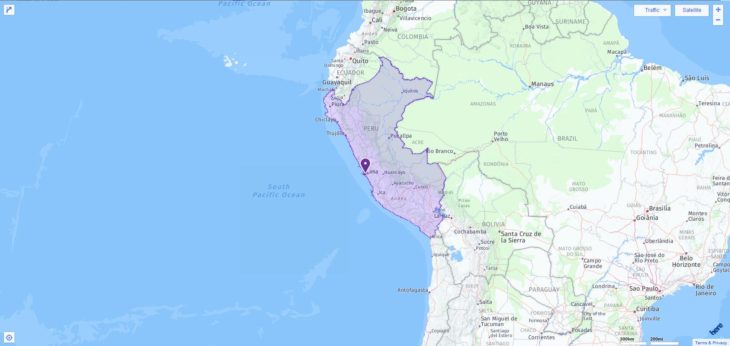Your search found 1 match. The following is the full list of ACT testing locations in Peru among which you can pick one to take the exam. Please know that on the test day, test takers can use any 4-function, scientific, or graphing calculator. On the table below, you can also find all test dates through 2019.

2019-2020 ACT Test Dates in Peru
| Test Date | Registration Deadline |
| February 9, 2019 | January 11, 2019 |
| April 13, 2019 | March 8, 2019 |
| June 8, 2019 | May 3, 2019 |
| July 13, 2019 | June 14, 2019 |
| September 14, 2019 | August 16, 2019 |
| October 26, 2019 | September 20, 2019 |
| December 14, 2019 | November 8, 2019 |
| February 8, 2020 | January 10, 2020 |
| April 4, 2020 | February 28, 2020 |
| June 13, 2020 | May 8, 2020 |
| July 18, 2020 | June 19, 2020 |
ACT Test Centers in Peru
| City | Center Name | Center Code |
| Lima | Inst Ed Franklin Delano Roosevelt | 867430 |
More about Peru
Peru lies between the equator and 18 ° 20 ′ south latitude (around 2,300 km north-south extension). In the west it borders on the Pacific, in the north on Ecuador and Colombia, in the east on Brazil, in the southeast on Bolivia and in the south on Chile.
The country is divided into three large natural areas. The 2,300 km long and 40–150 km wide coastal desert in the west (Costa, around 12% of the national territory) is interrupted by 52 cordillera rivers, of which only ten carry water all year round. Oases developed along the rivers, some of which were considerably expanded using modern irrigation techniques.
The mountainous country of the Andes (Sierra, around 30% of the national territory) consists of two cordillera, which come together closely at Cerro de Pasco and here form the most important watershed of Peru (headwaters of the Huallaga, Mantaro and Marañón). To the north of this, the Cordilleras are separated by the Marañón, a long valley that is partly 3,000 m deep. To the south extends between the two mountain ranges an inner Andean plateau (Altiplano, 3,000–4,500 m above sea level), which merges into a drainless basin with Lake Titicaca (3 812 m above sea level) in the south.
The Western Cordillera has in the north in the Cordillera Blanca (highest mountain in Peru Huascarán, 6768 m above sea level; Huascarán National Park is a UNESCO World Heritage Site) and in the Cordillera Huayhuash (Yerupaja 6 632 m above sea level) the highest peaks in Peru and has in the southern part numerous volcanic cones (including Coropuna 6,425 m above sea level).
The Eastern Cordillera is lower and consists of several mountain ranges, which are broken by many water-rich rivers in gorge-like valleys to the east to the Amazon lowlands. Plateaus and high mountain valleys are densely populated. On steep slopes there are arable terraces from the Inca period, some of which are still in use.
To the east joins the Oriente (around 58% of the national territory), which is divided into the Montaña (mountain forest, partly as a cloud forest up to 3,500 m above sea level, on the eastern slopes of the Eastern Cordillera) and in the tropical and humid, often still undeveloped and very sparsely populated woodland (Selva), which is interspersed with savanna islands in the valleys.
Media
The constitution guarantees freedom of the press. Intimidation, violence, restrictive media laws and government pressure, however, hamper broad coverage.
Press: There are around 60 newspapers. The largest daily newspapers include “El Comercio” (founded in 1839), “La República” (founded in 1982), “Ojo” (founded in 1968), “Diario Correo” (founded in 1962), the tabloid “Expreso” (founded in 1961, with Evening edition “Extra”), the business newspaper “Gestión” (founded in 1990) and the sports newspaper “El Bocón” (founded in 1994). The official gazette “El Peruano” (founded in 1825) is America’s oldest daily newspaper.
News agency: “Agencia Peruana de Noticias Andina”.
Radio: In addition to the national Radio Nacional de Peru (founded in 1925), there are radio stations from “Radio América”, “Radio Programas del Perú” (RPP) and “Panamericana Radio” as well as around 850 other, mostly local radio stations, some of which are also in Quechua send. TV programs are broadcast by the state-run TV Perú (founded in 1957) and a dozen private broadcasters, including “America Televisión” (Canal 4, Canal N), “Andina de Televisión” (ATV, Red TV), “Latina” and “Panamericana Televisión”.
Transportation
The closure of the coast by the Andes makes it difficult to develop traffic. The road network covers 140 700 km. Most of the roads are unpaved. The main traffic artery is the 2,600 km long section of the Carretera Panamericana running north-south from the Ecuadorian to the Chilean border along the coastas well as various access roads to the production centers in the highlands and the rainforest region in the east. The railway system (total length: 1,854 km) consists of several non-contiguous route networks. Inland shipping is restricted to the upper Amazon basin and Lake Titicaca. The most important inland port is Iquitos on the Amazon. Most of the foreign trade is handled via the Callao seaport near the capital Lima. Other seaports are Trujillo, Chimbote, Matarani and Ilo. The largest international airport is in Lima (“Jorge Chávez”).

